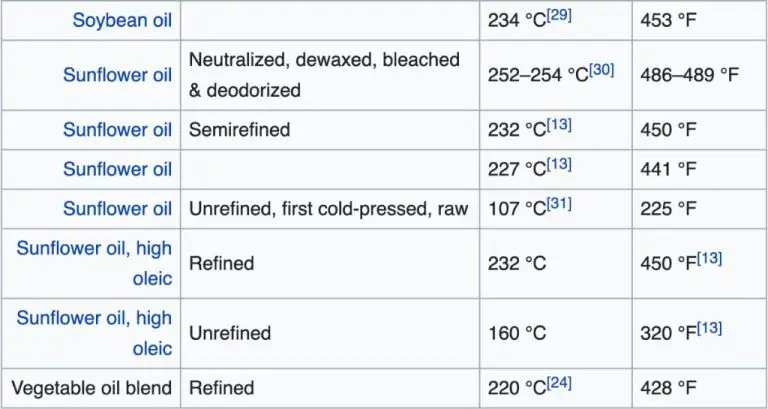Can A Wick Be Too Big For A Candle?
The size of a candle’s wick plays a crucial role in the performance and life of the candle. An improperly sized wick can lead to issues like tunneling, sooting, and more. The relationship between wick and flame is a careful balance – if the wick is too small, the flame will be snuffed out, but if the wick is too large, the flame will get out of control. This article explores whether it’s possible for a candle wick to be too big and the implications of wick sizing. We’ll cover how wick dimensions affect the candle burning process, signs that your wick is too large, and tips for proper wick maintenance and sizing. Properly matching your candle wick to the candle size and type will allow you to enjoy clean, safe candle burning.
What is a Candle Wick?
A candle wick is a small piece of string or fabric that runs through the center of a candle. Its main purpose is to deliver fuel to the flame. As the flame melts the wax surrounding the wick, the melted wax travels up the wick by capillary action and is then vaporized by the heat of the flame. This creates a continuous fuel source to keep the candle burning.
Wicks are typically made from materials like cotton, paper, or wood. The wick needs to be absorbent so it can “wick up” the melted wax. At the same time, the material needs to be stiff enough to stand upright when embedded in solid wax. The wick also needs to burn slowly along with the wax in order to avoid producing excess smoke or creating a runaway flame.
Recommended Wick Size
The recommended wick size depends on the diameter of the candle. As a general guideline:
- For candles 1-2 inches in diameter, use a wick with a diameter of 1/16 inches.
- For candles 2-3 inches in diameter, use a wick with a diameter of 3/32 inches.
- For candles over 3 inches in diameter, use a wick with a diameter of 1/8 inches.
Following these size guidelines helps ensure proper melting, burning, and wax pooling for the candle. The wick must be wide enough to absorb and distribute wax as fuel to the flame. If the wick is too narrow for the candle’s width, it may tunnel down the center without melting all the wax.
When a Wick is Too Big
An oversized wick can cause numerous problems for your candle. The most noticeable issue is that it will produce a larger flame. While you may think a larger flame seems desirable, too large of a flame can be dangerous. The oversized flame can more easily catch other combustible materials on fire if placed too close to them. It also releases more soot into the air, resulting in dirty smoke and increased carbon buildup on your candle and walls.
Additionally, an oversized wick burns the wax too quickly and hot, creating a deep melted wax pool that is wider than ideal. This can lead to the candle tunneling down the center, leaving untouched wax around the edges. Tunneling shortens the burn time and life of the candle. The bigger flame also has the potential to crack or break apart the wax around the wick as it burns. This can create more issues with uneven melting and wick stability.
Generally, the problems caused by an oversized wick result in poor candle performance, wasted wax, and potential safety risks. It’s best to trim your wicks to the proper length recommended by the manufacturer to prevent these issues.
Wick Trimming
If your candle wick starts to mushroom or produce excess soot, this is a sign it may be too large and needs trimming. Trimming an oversized wick is easy:
- Wait for the candle wax to completely harden and the candle to be cooled.
- Use small sharp scissors or nail clippers to snip off the charred black strands from the top of the wick. Cut just enough to remove the blackened portions.
- Avoid cutting the wick too short. Leave at least 1⁄4 inch of wick remaining to allow for proper burning.
- Trim only the top blackened part of the wick. Do not cut into the unwaxed white wick portion.
- Trim the wick before each lighting to maintain the optimal flame size.
Regularly trimming the wick as the candle burns down will help sustain an even burn and avoid issues caused by oversized wicks.
Wick Sizing by Candle Type
The optimal wick size can vary depending on the type of candle. Here are some guidelines for wick sizing for different candle varieties:
Pillar Candles
Pillar candles should have a smaller wick, around width of a toothpick. This helps prevent tunneling and promotes even burning. A wick that’s too wide can create excessive dripping down the sides.
Votive Candles
Votive candles do well with a slightly larger wick, approximately the width of a standard wooden matchstick. This provides enough fuel for complete melt and fragrance diffusion.
Container Candles
For candles in jars and other containers, use a medium or large wick to match the diameter of the container. The wax pool should reach the edges of the container with each burn for optimal performance.
Floating Candles
Oversized wicks are recommended for floating candles to allow for a larger flame. But be mindful of the diameter of the candle to prevent tunneling.
Beeswax Candles
Beeswax candles burn cooler than other wax types, so a slightly larger wick is suggested. Test for a full melt pool and adjust wick size up or down accordingly.
Gel Candles
Smaller wicks work best for gel candles, as large wicks can cause the gel fuel to burn too quickly and create a fiery flare-up.
Proper Wick Maintenance
One of the most important aspects of proper wick maintenance is keeping the wick trimmed to an optimal height for the candle. As a candle burns, the wick will get longer and longer which can lead to issues. An overlong wick that has curled over into the melted wax pool may start to smoke and give off an unpleasant smell. Trimming the wick prevents this.
Typically, you’ll want to trim the wick to 1⁄4 inch before lighting for the first time. Once lit, trim the wick as needed each time before relighting to maintain a consistent flame height of 1⁄2 to 1 inch high. Any shorter than 1⁄4 inch may lead to tunneling, while any longer than 1⁄2 inch can produce wild flickering and excess smoke.
With a properly trimmed wick, the candle will burn slowly and evenly down. The flame will be steady, bright and give off minimal smoke. Trimming just takes a few seconds but makes a big difference in performance and safety.
Signs of Improper Wicks
An improperly sized wick can cause a variety of issues while burning a candle. Here are some signs that the wick may be too large for the candle:
- Excessive smoke or soot: A wick that is too large will produce more smoke and leave black soot marks on the candle jar or walls around it. This is because a large wick triggers bigger flames that cannot properly combust all the wax and fragrance oils.
- Mushrooming: As the wick burns down, the tip may mushroom out instead of maintaining a tapered shape. This is a sign it needs to be trimmed back to prevent continued mushrooming.
- Tunneling: Over time, a large wick will create a tunnel down the center of the candle as it burns through the wax too quickly. This makes the candle unusable.
- Sputtering flames: If the wick is too wide for the molten wax pool, the flame can start to crackle and spit. This leads to uneven burning.
- Drowning wick: In severe cases with a very wide wick, the wax can snuff out the flame entirely. The wick becomes saturated and cannot stay lit properly.
These issues indicate the wick needs to be trimmed or replaced with a smaller size more appropriate for the particular candle. Proper wick maintenance helps prevent excess smoke, uneven burning, and other problems.
When to Replace a Wick
Over time, all candle wicks will degrade and need to be replaced. There are a few key signs that indicate your candle wick has reached the end of its lifespan and requires a full replacement:
- The wick is smoking and producing black soot.
- The tip of the wick has turned black and hard.
- The flame is very small, weak, and flickering.
- Wax is pooling unevenly around the wick.
- The wick makes cracking or popping sounds.
- You see thick black smoke or the wick doesn’t stay lit.
If you notice any of these signs, it means the wick can no longer draw wax properly and needs to be replaced. When a wick is spent, it poses safety risks and will produce poor burn results. Replacing the wick will restore the candle’s flame and burn performance. Follow the candle manufacturer’s guidelines on wick sizing and only use wicks made specifically for that type of wax and candle.
Conclusion
In summary, the size of a candle wick matters for proper candle burning and longevity. An oversized wick can lead to issues like mushrooming (wick getting a mushroom shape), tunneling, excessive dripping, and more. Generally, a wick should be slightly smaller than the diameter of the candle container to avoid being too big. However, wick sizing depends on the type of wax, container shape, and other factors. With the right wick fit, regular trimming, and maintenance, you can optimize candle performance and enjoy your candle’s full burn time. The takeaway is to follow manufacturer guidelines on wick sizes, observe how your candle performs, and make adjustments as needed to achieve the best burn.





